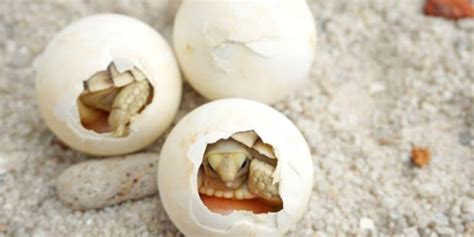Tortoise Egg Incubation: Temperature & Humidity Secrets
Successfully hatching tortoise eggs requires a deep understanding of the delicate balance between temperature and humidity. These two factors are critical for embryonic development and directly impact hatching success rates. Ignoring optimal conditions can lead to developmental abnormalities, mortality, or even complete failure of the incubation process. This comprehensive guide delves into the secrets of successful tortoise egg incubation, exploring the crucial role of temperature and humidity control.
What Temperature Do Tortoise Eggs Need to Hatch?
This is arguably the most crucial question in tortoise egg incubation. The ideal temperature range varies significantly depending on the tortoise species. Some species thrive in slightly cooler temperatures, while others require warmer conditions. Incorrect temperature can lead to a skewed sex ratio (temperature-dependent sex determination is common in reptiles), developmental problems, and ultimately, death of the embryos. Consult a reputable source specific to your tortoise species to determine the precise optimal temperature range. A reliable reptile incubation thermometer is an absolute necessity.
How to Maintain Consistent Temperature?
Maintaining a consistent temperature throughout incubation is paramount. Fluctuations, even small ones, can stress the developing embryos. Several methods achieve this:
- Incubators: Purpose-built reptile incubators offer the most precise temperature control. These devices typically feature thermostats and heating elements for maintaining a stable environment.
- Heat Mats: Heat mats placed under the incubator or enclosure can supplement ambient temperature. Use a thermostat to regulate the heat mat's output and prevent overheating.
- Heating Cables: Similar to heat mats, heating cables provide consistent warmth. However, ensure they are appropriately sized for the incubator and protected from direct contact with the eggs.
- Temperature Monitoring: Regularly check the temperature with multiple thermometers placed in different parts of the incubator. Accurate monitoring allows for timely adjustments to maintain optimal conditions.
What Humidity Level is Best for Incubating Tortoise Eggs?
Humidity is another critical factor influencing successful hatching. Too much moisture can lead to fungal infections and rotting eggs, while too little can cause dehydration and embryonic death. The ideal humidity level, like temperature, is species-specific. Research the requirements for your specific tortoise species.
How to Regulate Humidity?
Controlling humidity during incubation requires careful management:
- Substrate Selection: The type of substrate you use significantly impacts humidity. Vermiculite is a popular choice, offering good moisture retention. Properly moistening the vermiculite is crucial; it shouldn't be soggy or completely dry.
- Water Dishes: Shallow water dishes placed within the incubator can increase humidity. However, ensure the eggs don't come into direct contact with the water.
- Humidity Gauges: Use a reliable humidity gauge to monitor the levels regularly. This allows for prompt adjustments to maintain the desired range.
- Ventilation: Adequate ventilation is crucial to prevent the build-up of excess moisture and mold. Ensure the incubator has sufficient air circulation.
How Long Does it Take for Tortoise Eggs to Hatch?
Incubation times vary widely depending on the species and the temperature. Some species may hatch within a few months, while others may take a year or more. Refer to species-specific guides for expected incubation periods. Patience is key during this phase; premature intervention can be detrimental.
Signs of Impending Hatching:
Observe the eggs closely for signs of impending hatching. This usually involves:
- Pipping: The baby tortoise will begin to peck at the shell.
- Movement: You might see increased movement within the egg.
- Cracks: Cracks and small holes will appear in the eggshell.
What are the signs of a healthy tortoise egg?
Healthy tortoise eggs typically exhibit:
- Firmness: They should feel firm to the touch, not soft or squishy.
- Shape: They are usually oval-shaped and relatively symmetrical.
- Color: The color will vary depending on the species but should be generally consistent throughout.
How do I know if my tortoise eggs are infertile?
Infertile eggs may show:
- No development: They will remain unchanged throughout the incubation period.
- Mold or fungal growth: This is a clear sign of problems.
- Soft or shrunken appearance: These indicate that the egg is not developing properly.
What should I do if my tortoise eggs are not hatching?
If your tortoise eggs are not hatching after the expected incubation period, several factors could be at play:
- Incorrect temperature or humidity: Double-check your monitoring equipment and ensure consistency.
- Infertile eggs: Unfortunately, some eggs simply won't be viable.
- Embryonic death: This can occur due to various factors, including disease or environmental stress.
Consult with a reptile veterinarian or experienced reptile breeder for guidance if problems occur.
Remember: successful tortoise egg incubation requires diligence, research, and a commitment to providing optimal conditions. Always prioritize species-specific requirements for best results. Happy hatching!

